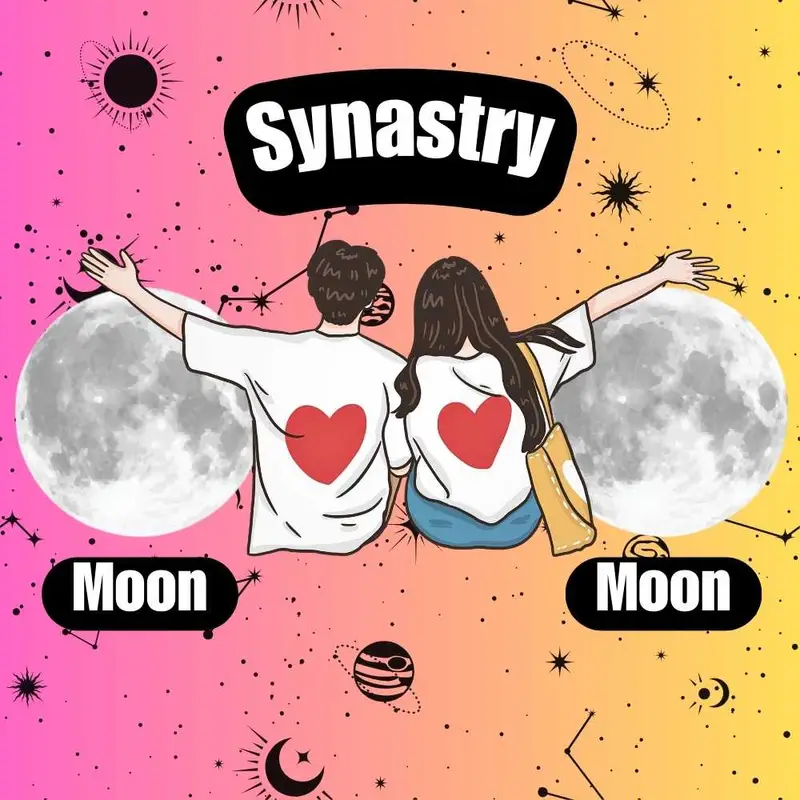Moon-Moon Aspects in Synastry
“If everything around you seems dark, look again. You may be the light.”
Rumi

Disclaimer: My interpretations are meant for self-reflection, not prediction. For a deeper understanding of your chart, check out my comprehensive list of synastry aspects.
Moon Conjunct Moon Synastry
When two Moons are conjunct in synastry, you can share a deeply emotional connection. You can intuitively understand each other’s moods, instincts, and personalities.
You can read each other’s subtle cues. The slightest shift in your partner’s tone of voice or body language can convey volumes.
You may also react similarly to situations. You can gravitate toward the same comforts and have compatible ideas about family life. You can nurture each other very well.
Read more: Astrology and Supernatural Power
Moon Sextile Moon Synastry
With Moon sextile Moon synastry, you can nurture each other emotionally. You can safely open up about your inner worlds, insecurities, and dreams. You can swap memories of the past for hours.
Your intuition can support each other nicely. You can communicate through glances, gestures, or simply being together. There is a sense of belonging that makes you both feel deeply connected.
You likely share family values, so your home life can be harmonious. You can get along well with each other’s mother. There are deep compassion and empathy in the relationship, so you can value being kind instead of being right.
Moon Square Moon Synastry
With Moon square Moon synastry, your emotional needs and expressions may not match. What comforts one may not comfort the other. One can be emotionally upbeat, while the other can be pensive. Either one or both are prone to mood swings.
Your reactions to situations can also differ. One may go silent and withdrawn, while the other can be emotionally expressive. One can be cautious about giving affection, while the other can be more carefree.
The square can also manifest as different approaches to home and family. You may have contrasting ideas about what constitutes a good living environment.
For couples with children or planning to have kids, you may clash between two different parenting styles. In some cases, your mothers may not get along well with each other.
Moon Trine Moon Synastry
With Moon trine Moon synastry, you can emotionally understand each other. You can intuitively grasp each other’s needs, moods, and personalities. Your reactions to situations can be similar.
There can be a natural give-and-take that makes you both feel nurtured. Where one needs more space, the other can grant it lovingly. When one needs a company, the other can offer a warm hug and listening ears.
Moving in together can be an easy adjustment. You can create a peaceful home environment together. You can support each other’s family backgrounds and roots. You can take a genuine interest in understanding where your partner came from and why they are who they are.
However, too much of a good thing in the relationship can lead to complacency. You can easily fall into a routine of comfort and forget to challenge each other to grow.
Moon Opposite Moon Synastry
With Moon opposite Moon synastry, you may embody what the other feels they lack emotionally. You may react differently to situations.
One can be emotionally open, while the other can be more reserved in their feelings. One may seek robust social connections, while the other may prefer peaceful solitude. Your personal clocks may conflict too – one can be a night owl, while the other can be a morning bird.
Your domestic habits can clash, such as around neatness, chores, or how to run a household. Even your comfort foods and family traditions can differ.